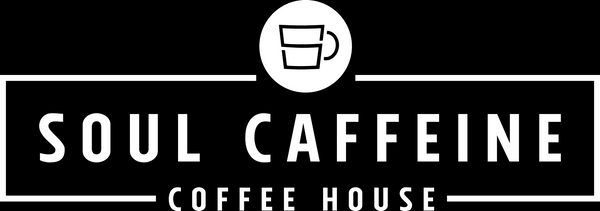
More Than You Ever Wanted to Know About Caffeine
Share
I grew up with folks who liked "strong" coffee that would "put hair on your chest". Personally I prefer a cup of coffee I enjoy rather than being kicked in the mouth, so let's settle the debate on what coffee has the biggest caffeine kick. If you don't want to read to the end...the answer is it depends! The amount of caffeine in your coffee can vary widely depending on a range of factors. From the roast level of the beans to the brewing method and variables like grind size, brew time, water temperature, and bean variety, the science of coffee brewing offers insights into how to maximize (or minimize) your caffeine intake. In this article, we’ll explore the science behind caffeine extraction and explain how each of these factors influences the caffeine levels in your coffee.
Bean Variety (Arabica vs. Robusta)

One fundamental factor is the coffee bean species. The two most common species are Coffea arabica (Arabica) and Coffea canephora (Robusta). Robusta beans naturally contain significantly more caffeine than Arabica beans – roughly on the order of 1.5 times to nearly double the caffeine content. This means that a brew made predominantly with Robusta will pack a stronger caffeine punch than a brew made with the same amount of Arabica. In fact, many commercial coffee blends include some Robusta to boost caffeine content (and to cut costs), even though Arabica is prized for superior flavor.
It’s worth noting that within the Arabica family, variations (origin, cultivar, etc.) can cause minor differences in caffeine, but those are small compared to the Arabica-vs-Robusta gap. The higher caffeine in Robusta is genetically driven – Robusta plants express genes that lead to more caffeine accumulation in the beans. So, the choice of bean variety sets an upper limit on how much caffeine can end up in your cup.
Roast Level: Light vs. Dark

Many coffee lovers debate whether a light roast or dark roast has more caffeine. The truth is a bit counterintuitive: roast level actually has only a minor impact on caffeine content. Caffeine is a relatively stable compound that doesn’t break down easily under typical roasting temperatures. While extreme roasting can cause a small amount of caffeine to be lost, the difference between light and dark roasts is negligible when measured by weight.
Why the persistent myth that dark roasts are “stronger”? It comes down to bean density and measurement. Dark roasted beans lose more moisture and puff up during roasting, becoming less dense. If you scoop coffee by volume (say, one tablespoon), a light roast will have more mass (and more caffeine) in that scoop than a dark roast, simply because the light roast beans are denser. On the other hand, if you weigh out, for example, 20 grams of coffee, light and dark roast will deliver virtually the same caffeine content. In summary, lighter roasts may retain slightly more caffeine than darker roasts, but the difference is small and mostly related to how you measure your coffee. Your choice of roast should be guided by flavor preference more than caffeine content.
Grind Size and Extraction Efficiency

The grind size of your coffee has a big influence on how quickly and thoroughly caffeine is extracted into your brew. Finer grinds expose much more surface area of the coffee to water, which generally allows more rapid and complete extraction of soluble compounds like caffeine. A very fine grind (think espresso or Turkish coffee grind) means water can penetrate and dissolve caffeine from the particles quickly. In contrast, coarse grinds have larger particles with less total surface area and more internal material that water might not penetrate as fully during a typical brew. This means a coarse grind tends to extract more slowly and can yield a lower caffeine concentration if brew time isn’t sufficiently long.
Importantly, grind size must be matched to the brewing method to optimize caffeine extraction. For example, espresso uses a fine grind because the water contact time is very short (~20–30 seconds). French press or cold brew use a coarse grind because they involve long steeping times; a fine grind would over-extract and also create sludge in these immersion methods. In immersion brewing (like French press), a coarse grind still yields a lot of caffeine because the steep time is long enough. In contrast, in a gravity drip method, if the grind is too coarse the water may percolate through quickly, resulting in a shorter contact time and potentially less caffeine extracted.
The takeaway for grind size: if you want to maximize caffeine, use the finest grind appropriate for your brewing device. If you grind too coarse relative to the brew time, you might under-extract caffeine. Conversely, grinding too fine for a long brew could lead to over-extraction of other compounds and very bitter flavors, although you’d get a lot of caffeine too. Consistency of grind is also key – an even grind ensures uniform extraction.
Brew Time (Contact Time)

It seems logical that brewing longer would extract more caffeine, and to an extent that’s true – but only up to a point. Caffeine is highly water-soluble, and most of it comes out of the grounds early in the brewing process. In fact, research on espresso brewing shows that the vast majority of the caffeine is extracted in the first portion of the shot. After that, additional water primarily dilutes the beverage rather than pulling much more caffeine. This illustrates that caffeine extraction happens relatively quickly.
On the flip side, if brew time is too short, you’ll get less caffeine. An espresso shot pulled in 10 seconds, for instance, would likely be under-extracted. There is a minimum contact time needed to wash caffeine out of the coffee particles. But beyond that optimal brewing time, extending the brew doesn’t significantly increase caffeine – it may just extract more bitter compounds.
Cold brew is a special case: the brewing time is extraordinarily long (8 to 24 hours is common) because the water is cold. The low temperature dramatically slows extraction, so cold brew compensates with time. Given enough time, cold water can indeed extract plenty of caffeine. After many hours, a cold brew can achieve similar or even higher caffeine yield than a hot brew of the same coffee steeped just a few minutes at near boiling.
So ensure your brew time is sufficient to fully extract caffeine given your grind and method. For most hot methods, a few minutes is plenty. Espresso’s short 20–30 second brew works because of the fine grind and pressure. A French press or pour-over taking 4 minutes also gets the job done for caffeine. The sweet spot is achieving near-complete caffeine extraction without ruining flavor.
Water Temperature

Water temperature is a critical factor for extraction because it affects how easily compounds dissolve. Hot water extracts caffeine far more efficiently than cold water. Caffeine’s solubility in water jumps dramatically as temperature increases. In other words, boiling water can hold vastly more caffeine in solution than water at room temperature. Practically, this means that near-boiling water (194–205 °F) will pull caffeine out of coffee grounds much faster than cooler water. This is one reason typical brew guidelines call for water around 195–205 °F – it’s optimal for extracting the desirable compounds, including caffeine, from coffee.
If you brew with water that’s not hot enough, caffeine extraction will be slower and less complete in a given time. Conversely, using boiling water (212 °F) can extract slightly more caffeine quickly, but beware: water that’s too hot can also over-extract other components, yielding bitterness. For most brewing methods, staying in the 194–205 °F range is ideal: it’s hot enough to efficiently dissolve caffeine, but not so hot as to scorch the coffee.
Cold brew, as discussed, uses low temperature but makes up for it with time. After many hours, cold water can achieve a high caffeine extraction, but if you were to compare two identical brews for the same short time, the one with hotter water will have extracted far more caffeine.
Brewing Methods and Caffeine Extraction
The method you use to brew coffee integrates many of the factors above – each method has its typical grind size, contact time, water temperature, and even pressure – all of which influence caffeine extraction. Let’s compare some of the popular brewing methods at a high level:
- Espresso: Highly concentrated due to fine grind, high pressure, and short brew time. A single 1 oz shot of espresso contains about 63 mg of caffeine on average. It tastes strong but actually has less total caffeine than a standard cup of coffee because of the small serving size.
- Drip Pour-Over Coffee: Brewed over 3–5 minutes with medium grind. A typical 8oz cup of drip coffee contains about 95–100 mg of caffeine. It’s less concentrated than espresso but provides more caffeine in total because of the larger serving size.
- French Press (Immersion): Steeps coarse grounds for about 4 minutes. Produces a cup with ~80–100 mg caffeine per 8 oz, similar to drip. Longer steeping balances the coarser grind, resulting in efficient caffeine extraction.
- Cold Brew: Uses coarse grounds steeped in cold water for 8–24 hours. Typically has the highest caffeine per serving because of the long extraction time and higher coffee-to-water ratio. An 8 oz glass often contains 150–200 mg or more.
Other methods like the Moka pot, AeroPress, and Turkish coffee fall between these, with caffeine content depending heavily on grind, ratio, and serving size. The key is that every method has its typical recipe balancing grind, time, coffee amount, and water – those variables determine the caffeine in the final cup.
To sum up the comparisons: Espresso is concentrated but moderate in total caffeine per shot. Drip and French press deliver more caffeine per serving because of larger volumes. Cold brew can easily pack the most caffeine, especially if consumed undiluted.
Conclusion
Brewing a cup of coffee is both an art and a science, and the caffeine kick you get is determined by more than just the beans themselves. We’ve seen that bean variety sets the baseline. Roast level has only a slight effect. Grind size, brew time, and water temperature all play major roles in how much caffeine is extracted. And importantly, brewing method ties everything together, dictating the grind, time, temperature, and coffee dose.
For coffee aficionados, this knowledge is power. Want to tweak your caffeine intake? You can experiment with these variables. Just remember that every change may also affect flavor. The best cup of coffee is one that suits both your taste and your energy needs.
